Korean Food Recipe
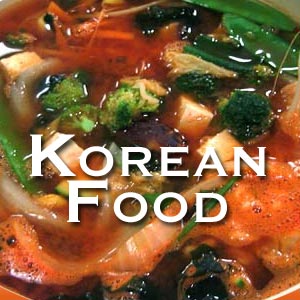
The spirit of Korean food is seen in its profusion of dishes and cooking techniques, gleaned from both peasant diets and royal palace cuisine. Much like their Asian counterparts, Koreans are fond of eating hot and spicy food. Ground hot chili peppers lend a distinctive spicy taste to Korean recipes. Korean food derives its flavor and taste from combinations of sesame oil, soy sauce, soybean paste, garlic, ginger and the all-important, kim-chi. Take a tour of Korean food – typical dishes and how they are served. Pick up simple Korean food recipes.
Korean food
Like in any other place, climatic conditions and geography influence the food habits of people of Korea. Cold winters, warm summers and long, pleasant autumn mark the overall climatic conditions of Korea. The valleys are aplenty with rice, beans and vegetables while in the mountains mushrooms and many wild plants like bracken, bellflower are cultivated.
Surrounded by sea on three sides, it is no surprise that no Korean meal is ever complete without a bowl of tiny dried and salted fish. Meat of cows, pigs or chickens is broiled, fried, boiled or stewed in most Korean food recipes.
Classic Korean meal
A typical Korean meal (pepkan) consists of the staple food Rice (bap) along with soup and three or more complementary side dishes (pan cha). The number of side dishes on the table decides the type of traditional table setting. A typical Korean family prepares 5-7 dishes. It is the royals who enjoyed 12 dishes in the bygone days. The national dish 'kimchi' is an all-time favorite at all meals. Rice noodles and bean curd are common starch substitutes or additions to rice.
Typical Korean table setting
Koreans follow the traditional table setting on days of importance such as a celebration or a memorial service. The table settings are classified according to the number of side dishes served. This does not include rice, soup and kimchi. Koreans use a long-handled shallow spoon for eating rice and a thin metal chopstick for noodles or side dishes.
The whole meal is served at once along with the side dishes on a low table where the diners sit. Individual hot soups are set in a different table. Spoons and chopsticks are not used simultaneously. Likewise, Koreans do not hold their bowls and plates while eating. On completion of a meal, the spoon and chopsticks are returned to the original place. A typical Korean table setting consists of:
Individual bowl of rice
A small bowl of hot soup for each person
Small bowls of side dishes in the center of the table to be shared by all diners, which can be replenished.
Specialty Authentic Kimchi
What Scotch is for Scotland and pizza for Italy, so is Kimchi for Korea. Way back in 1936, Soon Kee Chung a Gold Medal Winner in Olympics marathon attributed his gold medal winning performance to the miraculous powers of kimchi. People believed that Chung had gained extraordinary strength and power from the kimchi and rice he consumed while training for marathon. Such is the popularity of 'kimchi'. The origin of Kimchi dates back to 7th century.
Koreans realized that fresh vegetables become scarce during the long, cold winters. As a substitute to fresh vegetables, they decided to store vegetables by preserving the vitamins and minerals. This perpetuated healthy eating habits even with changing seasons. Kimchi refers to the process of preserving vegetables through fermentation. Hot and spicy Kimchi appears as a side dish at nearly every Korean meal and is an essential part of kimchi stew and kimchi pancakes.
Korean food recipe
Gut Churi Kimchi (Instant Kimchi)
1 Chinese cabbage
1 teaspoon vinegar
2 cloves garlic
1 tablespoon salt
1 teaspoon hot pepper
1 tablespoon sugar
1 tablespoon soy sauce
Chop cabbage into thin pieces. Mix it with crushed garlic and hot pepper, soy sauce and vinegar. Add salt and sugar and keep for fermentation for at least 1 hour. Season with sesame oil. In this Korean food recipe, the fiber in cabbage prevents constipation and intestine cancer. Pepper and garlic help to lower blood cholesterol and aid in blood clotting. During the process of fermentation, microorganisms are produced, which are very beneficial to the human body.
Korean food recipe - Pulgoki (Barbecued marinated beef strips)
Prepare a sauce by mixing soy sauce, sugar, minced garlic, sesame seeds, sesame oil, chopped green onion and water. Pour this sauce over sliced beef and allow to marinate. Barbecue the beef sliced till medium done.
Musangchae - White radish salad
This healthy Korean food recipe involves mixing thin radish strips with red pepper powder, sugar, garlic and chopped green onion. Sprinkle vinegar and serve.
Yakshik – Sweet spiced rice
4 cups short grained rice
2 tbsp soy sauce
1 cup brown sugar
ground cinnamon
¼ cup thick cream
4 tbsp sesame oil
¼ cup granulated sugar (for caramel sauce)
Wash and drain rice and keep aside. Steam it till cooked and combine it with soy sauce, brown sugar, sesame oil and cinnamon. Caramelize the chestnuts and add to the rice mixture. Cook the mixture with cream and garnish with pine nuts.
Top of the Page: Korean Food Recipe
Tags:#korean food #korean food recipe
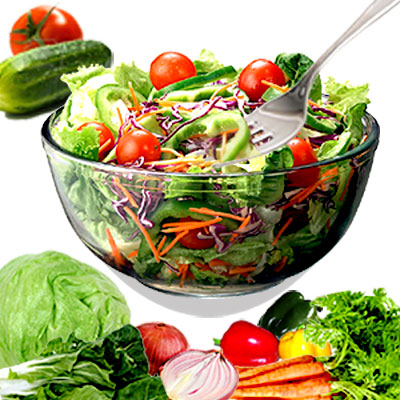 Food and Nutrition Facts
Food and Nutrition Facts Chamomile
Parsnip Soup
Dim Sum
Gazpacho Soup
Whole Grain Cereal
Jicama Nutrition
Bok Choy Stir Fry
Chia Seeds Benefits
Teff Nutrition
Kaniwa
Flax Seed
Wheatgrass Benefits
Kelp Benefits
Types of Chili Peppers
Medicinal Benefits of Pomegranate
Arugula Leaves
Maca Root
Pitaya Fruit
Benefits of Celery
Leek
Asparagus Benefits
Oyster Stew
Oyster Mushroom
Lupin Beans
Quinoa
Freekeh
Extra Virgin Olive Oil
Dill Pickle
Sauerkraut
Fat Burning Foods
Nutrition Chart
Food Combining
Calorie Counter
calories ...
Non Alcoholic Beverage
Punch Recipes
Food Label Nutrition
Homemade Sausages
Cooking Steak
Eating on a Budget
Budget Friendly Recipes
Quick Recipes
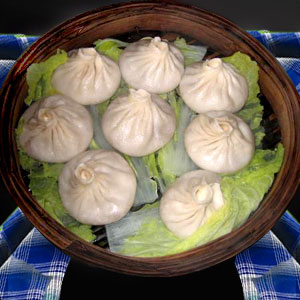 Healthy Packed Lunch
Healthy Packed Lunch Overnight Oats Recipes
Eggplant Casserole
Brunch Recipes
Burrito Recipes
Muffin Recipes
Cupcake Frosting
Apple Crisp
Stir Fry Cooking
Seafood Salad Recipe
Cooking Corn on the Cob
Finger Food Recipe
Sandwich Recipe
Bread Stuffing Recipes
Easy Chili Recipes
Picnic Recipes
Edible Mushroom Recipes
Mushroom Soup Recipes
Dip Recipe
Tapas Recipe
Corned Beef Recipe
Canned Salmon Recipe
Tilapia Recipes
Crumb Cake
Flourless Chocolate Cake
Regional Food
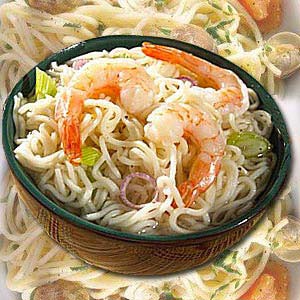 Lasagna Recipe
Lasagna Recipe Peruvian Ceviche
Chinese Food Recipe
Vietnamese Food Recipe
Malaysian Food
Korean Food Recipe
Indian Curry Recipe
Edible Rice Paper
Mexican Food Recipe
Quesadilla
Guacamole Dip
Italian Food Recipe
Spanish Food Recipe
Kosher Food
Falafel Recipe
Tandoori Chicken
Noodles
Canape
Couscous
Meatloaf
Chowder
Gumbo Recipe
Crockpot Recipes
Moroccan Food
Healthy Food
Pre Workout Snack
Matcha Tea
Simple food Swaps to Lose Weight
Foods to Beat Stress
Foods to beat Insomnia
Bone Density Foods
Prebiotic Foods
Kefir Grains
Agave Nectar
Spicy Trail Mix
Pesto Sauce
Homemade Hummus
Crab Cake Sauce
Bamboo Shoots Nutrition
Lemon Grass Plant
Butter Beans Recipes
Loose Green Tea
Seaweed Nutrition
Healthy Food
Low Fat Granola Bar
Steel Cut Oatmeal
Fruit Pizza
Pizza Toppings
Green Smoothie
Healthy Meal Planning
Delicious Mealtime Recipes
Heart Healthy Fats
Healthy Heart Recipe
Healthy Dinner Recipe
Healthy Dessert Recipe
Healthy Fast Food
Healthy Kid Recipe
Probiotic Food
Diabetic Friendly Foods
Fruit Salad Recipe
Bread Pudding
Tofu Recipe
Oat Bran
Broccoli Salad
Avocado Recipe
Iron Rich Food
Brain Foods
Antioxidant Food
Natural Diuretic
Low Fat Cooking Tips
Rice Pilaf Recipe
Low fat Chicken Recipe
Food Tips
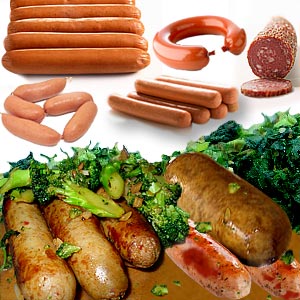
Sous Vide Cooking Technique
Natural Sugar Substitute
Stevia Sugar Substitute
Sunflower Seeds Nutrition
Bouquet Garni
Cake Decorating Tips
High Satiety Foods
Thanksgiving Dinner
Safe Food Storage
Frozen Food Storage Tips
Cold Storage Food Tips
Leftover Recipe
Food Pyramid
Dairy Free Food
Microwave Cooking
Food Intolerance
Homemade Ice Cream
Apple Cider Vinegar
Benefits of Honey
Beverage Cooler
Food Poisoning Symptom
Food Allergy Symptom
Food Addiction
Top of the Page: Korean Food Recipe
Popularity Index: 101,362

